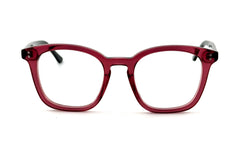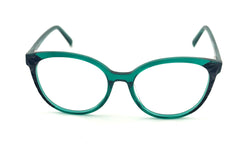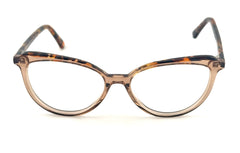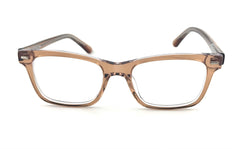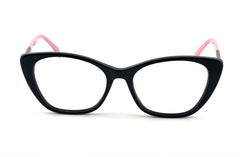Why It’s Important To Wear Sunglasses While Driving
Other than complete concentration, perfectly clear vision is mandatory for a smooth driving experience.
Natural sunlight and reflections from different surfaces cause a sharp glare that significantly reduces vision and clarity.
Wearing sunglasses is a lot more than a fashion statement.
Instead, it is an effective safety measure for safe driving and eye protection. The right pair of sunglasses can’t just protect the eyes from harmful UV rays but also reduce glare and make you feel more comfortable while driving.
In this blog, we will have a brief overview of the impacts of glare associated with driving, the benefits of wearing sunglasses, and key factors to consider while choosing sunglasses for driving.
The Impact of Glare on Driving Safety
Glare is one of the most notable disturbances for drivers with consequential outcomes. Whether from shiny surfaces, bright sun, or even from the headlights of other vehicles, it hinders clear vision. The reduced clarity of vision eventually increases the risk of accidents.
Understanding Glare and Its Sources
There are several sources of glare while driving. One of the biggest natural sources is the sun, particularly at sunset and sunrise. The sharply glared rays can blur vision, making it harder to see the road and other vehicles around.
In addition, the reflection of wet roads, glass buildings, and even snow causes a sharp glare. All these contributing factors increase the risk of mishaps and make anti-glare-coated sunglasses essential for safe and comfortable travel.
Risks Associated with Glare While Driving
The instant glare causes the eyes to lose vision for moments, making the view unclear. This temporary effect makes it difficult for drivers to see other vehicles and traffic signs. Delay in vision eventually results in delayed reactions and can increase the risk of accidents.
All these factors are damaging, cause eye strain and fatigue, and worsen the driving experience.
Benefits of Wearing Sunglasses During Driving
Wearing sunglasses has versatile benefits, ranging from the ultimate UV protection to clear vision.
Likewise, wearing sunglasses while driving improves comfort and clarity. Instant glare is a serious and critical challenge faced by all drivers on the road.
Besides lowering clarity, vision, and reaction time, it is the root cause of numerous accidents and mishaps.
Reduction of Glare for Enhanced Visibility
The right pair of eyeglasses, which provides comprehensive protection, is also helpful in reducing glare and enhancing visibility. It ensures drivers can see clearly and drive safely with a reduced risk of sharp glares that cause vision impairment.
Protection Against Harmful UV Rays
Harmful UV rays are one of the recognized sources of eye damage. Sunglasses with UV protective coatings cover the eyes and protect them, ensuring better vision and eye health.
Decreased Eye Strain and Fatigue
Variations in the brightness and intensities of light are consequential for the eyes, causing eye strain and fatigue.
In addition to reducing glare and protecting the eyes against UV rays, sunglasses nourish the eyes with cool and calm contrasts to lessen these effects.
5 Key Factors for Choosing the Right Sunglasses for Driving
Sunglasses are subjective, like our choices. Not every pair of sunglasses is perfect for everyone. Some factors need to be carefully assessed to ensure better vision, clarity, and comfort.
For driving sunglasses, the following five factors must be considered.
-
UV Protection
Sunglasses with UV protection are always recommended. They help cover your eyes and protect them from harmful radiation.
-
Polarized Lenses
Sunglasses with polarized lenses are the most suitable to reduce glare and balance contrast. They optimize vision and clarity by reducing glare and improving contrast.
-
Appropriate Lens Tint and Color
Sunglasses with suitable tinted lenses enhance contrast and clarity in vision. Grey and brown tints are recommended, particularly for driving, as they are known for their better color perception.
-
Optimal Lens Darkness Levels
The darkness of your lenses should neither be very dark nor very low. It lies in between medium and long range to ensure clear vision.
-
Frame Design Considerations
Prefer your facial features while choosing the frame design. The right fit and comfort are essential to make the experience smooth. Lightweight frames with complete coverage are usually suggested for optimal outcomes.
Conclusion
The right pair of sunglasses can save you and your eyes from several potential hazards. Whether it is harmful UV rays or bright glare from the headlights on the road, sunglasses with anti-glare lenses are highly beneficial.
Besides reducing glare, they improve vision and clarity, enhance reaction time, and lower the risk of mishaps.
To find the perfect pair of sunglasses, lens color, Designer Frames, polarized coatings, and a few other considerations are helpful.
Ensure that you pick sunglasses with good fit and comfort to ensure enhanced visual clarity, comfort, and an overall better driving experience.





 1-833-LUCENT-1
1-833-LUCENT-1
 Glasses@LucentOptical.com
Glasses@LucentOptical.com Washington, DC
Washington, DC




